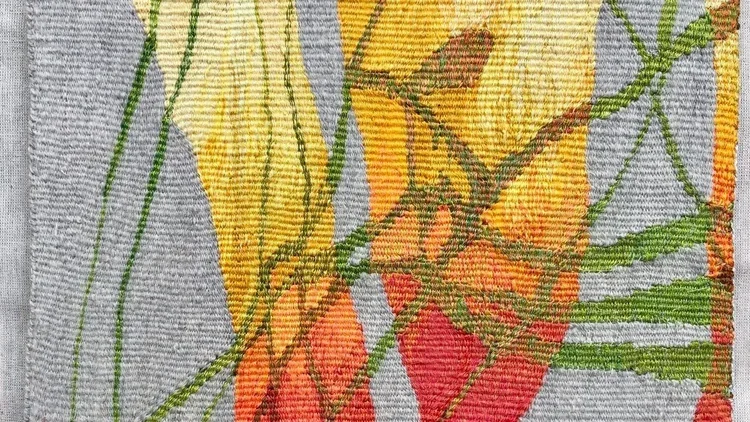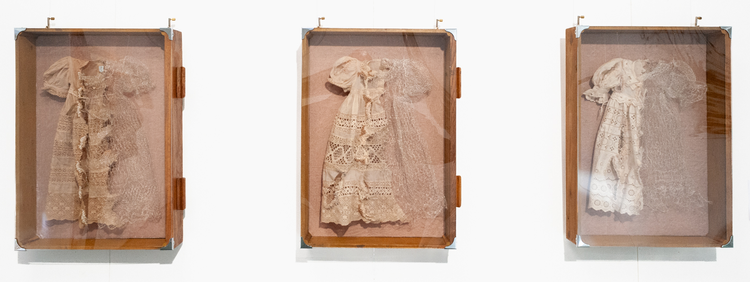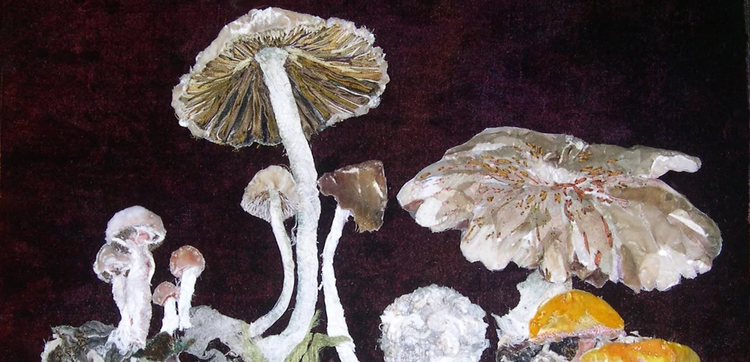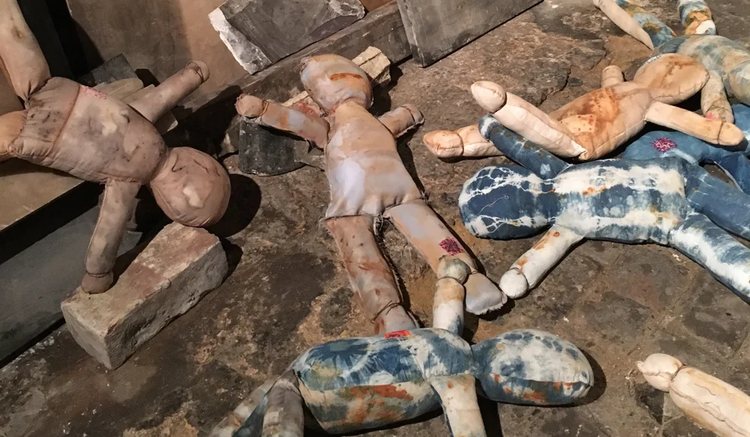November Newsletter
WELCOME FROM OUR CHAIRS
Welcome to the Autumn edition of the PRISM Newsletter. This issue is the perfect opportunity to introduce myself as the new Chair and Jane Riley as our new Vice Chair.
Since our founding in 1998, PRISM has has been dedicated to promoting the extraordinary talents within our group and sharing our creative journey with the wider artistic community. Our PRISM community now includes 66 members, each bringing a distinctive vision and approach to the world of textiles. Together, we continue to explore, inspire, and reimagine what is possible through the art of textiles.
Beginning with this edition, we will be spotlighting the work of six members, a feature we will continue in future newsletters. As we review the breadth of creativity across PRISM, several key themes stand out:
The diverse professional backgrounds that inform and enrich our artistic practices.
The constant innovation as members challenge the boundaries of textile and fibre-based art, honouring its history while redefining its place in contemporary art.
The strong presence our members have across the wider art world, from major exhibitions and publications to leading workshops and collaborations.
We hope you find this edition inspiring and enjoy reading our members’ highlights. Look out for our next edition at the end of November.
Wolfgang Woerner, Chair
Jane Riley, Vice Chair
MEMBERS IN THE SPOTLIGHT THIS MONTH
Wolfgang grew up in Germany before relocating to London in his late teens. His experience of living between cultures are central to his artistic practice. Rather than treating identity as something fixed, he explores its fluidity shaped by memory, place, and everyday encounters.
Touch is fundamental and he is drawn to materials with histories, discarded toys, napkins, hotel bedsheets, objects embedded with stories, becoming silent collaborators in the work.
Wolfgang’s work explores personal and collective space, recording fleeting impressions, physical traces, and emotional states. Each piece reflects a dialogue between material and memory, where process and sensation shape the outcome. Rather than aiming for resolution, his practice values presence, attention, and the quiet unfolding of meaning through making.
Jane is primarily a tapestry weaver, creating contemporary work with traditional craft techniques. Based at the Weaving Rooms in Darlington - a teaching studio she co runs - specialising in woven and spun textiles. Her practice draws inspiration from the British coastline, particularly its tidal zones, which she explores through swimming and walking.
A keen researcher she documents local wildlife, especially algae, making ecological observation part of her creative process. Keenly aware of the damage textile production has on the environment, her palette of yarns is restricted to either factory dead stock and second-hand stash or supporting UK farmers. Through craft, research and a deep respect for nature, Jane’s work invites reflection on the impact of making and our connection to the natural world.
Sue explores the intersection of material waste and urban space, creating abstract landscapes using repurposed commercial clothing waste—remnants of fast fashion, mass production, and consumer culture. These discarded materials become her palette for constructing textured, layered compositions that evoke the rhythms and structures of the city.
Sue uses stitching, layering, and paint to reflect on skylines and built environments, highlighting their fragility. Her work explores questions of home, change, and our impact over time. As both visual storytelling and material activism, her practice challenges textile waste and prompts us to rethink what we throw away. By transforming discarded materials into art, Sue addresses consumption, decay, beauty, ruin, and environmental connections.
Sewing is in Helen’s blood - it is this and parts of her family history and experience that influence her work. After working in knitwear and fashion, Helen returned to university to study art but escaping textiles was not to be, and her textile work is now her art.
Inspiration comes from overheard conversations, country walks, or just staring at the sea. Rummaging through old pieces of lace is heaven for Helen. Galleries of old pictures and dusty junk shops and museums are her idea of a great day out. Fine lace knitting with silver plated copper wire is the basis of much of Helen’s work along with worn rubbed and dyed fine silk fabric. She completes her work with its presentation to add to its story
Julia’s source of inspiration is the exploration of nature through the changing seasons. The discoveries waiting to be found, a cornucopia of wonders in their richness, texture, and intricacy of design. She chooses to work in hand stitch because each stitch can be considered in its placement, colour, and form.
Importantly, with nature subjects, this allows a natural organic progression echoing the ebb and flow and rhythms that exist in the living world which all lend healing to the psyche for both the giver and the receiver. Hand embroidery lets intuition and intent guide the hand. It allows as much time as is needed to enter fully into an empathetic understanding of the subject matter. For Julia this is invaluable in her wish to try to transmit essence, energy and aura into lasting, textural, dimensional artwork that is alive in revealing its heart.
Julie’s work is informed by her background in psychology and teaching. Her work reflects a preoccupation with the significance of childhood experiences, particularly those of maternal deprivation and loss.
Julie uses natural plant dyes, plant material, and rust to change the surface quality of fabric. Plants are chosen in response to their meanings and rust as a signifier of loss. Julie also works with heat press techniques to create fabric designs. Once made Julie uses stitch combining fabrics to make small pieces and larger installations, often in the form of faceless dolls and unwearable dresses. She sometimes combines these with plaster and wax. Julie hopes her work is open to the projection of feeling from the viewer often characterised as evoking a sense of loss.
MEMBER EXHIBITIONS AND NEWS
To see some of the events our members are currently participating in, please visit the BLOG section on our website for a full listing, and be sure to follow our INSTAGRAM account for updates and highlights.
Prism is a vibrant group of 66 textile artists dedicated to exchanging ideas, developing skills, and exhibiting work at a professional level. Membership callouts take place every two years.
Learn more about our mission and upcoming opportunities by clicking here.






